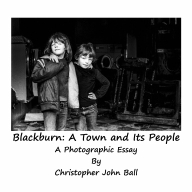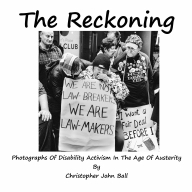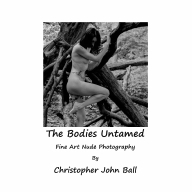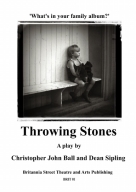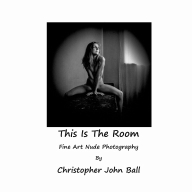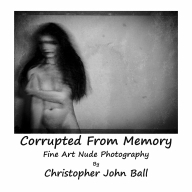
The DSLR Filmmaker's Handbook: Real-World Production Techniques by Barry Andersson
Published Sybex; 2nd Edition ( 2015) ISBN 978-1118983492

Tweet
There can be no argument that digital video capture revolutionised motion picture production to such an extent that few movies are now shot on
analogue film. For the low budget, independent film maker High Definition cameras and lower cost, more powerful computers and software served to further influence film production and open up possibilities. Perhaps though, it was the decision by Canon to include HD motion picture capture into their Canon 5D MK ii DSLR that did more to democratise film making and bring high quality, big screen capabilities to low budget, even no-budget, independent producers and creative film directors. It was not long before the Canon 5D MK ii saw firmware improvements that offered the user more options as to frame and bit rate. Then third party 'firmware' arrived in the shape of the much loved 'Magic Lantern' taking the cameras capabilities to new heights. Soon, other DSLR camera manufacturers started including the ability to shoot 1080p HD video, with sound, into their models as standard. Over the past couple of years, quality has improved and more options and refinements are now offered, including the much sought after 'cinematic' 24FPS option. We now have DSLR cameras that have gone beyond 1080p in terms of resolution and can now shoot in 4K!
Such cameras have opened up opportunities to make movies that were, in the days of film, denied to so many. Not only have young film directors been able to use DSLR's to make their first feature, one that looks great on the big screen or Blu Ray, but protest and pressure groups have been able to utilise these wonderful tools to get their message out there to a wider audience. This has gone hand in hand with new ways of distribution and the ability to escape the tyranny of existing media outlets and find an audience via the internet.
Barry Andersson is an award winning American director and cinematographer. His career started with live television video production and from there he has gone on to produce and direct several 35 mm motion-picture short films. Andersson has worked with a wide range of moving image capturing equipment ranging from 1/2″, 3/4″, Beta, and high-definition analogue and digital video through to 8 mm, 16 mm, and 35 mm motion-picture film. He is also well-versed in both video and traditional film workflow's. Andersson worked on one of the first feature films to be shot using a DSLR. His clients include ESPN, PBS, Discovery Channel, NBA, Disney, Skype and Samsung Electronics. His career and experience have served to make him ideally suited to the authorship of a book dealing with the real world application and techniques required to create quality motion pictures via the use of a DSLR and he has done just that with the publication of The DSLR Filmmaker's Handbook: Real-World Production Techniques.
The first chapters deal with with the fundamentals of DSLR Filmmaking, looking at what equipment is available. Andersson offers up recommendations and challenges you to ask of yourself 'What Camera Is Right for You?' You will find useful information on accessories, lenses and adapters along with detailed advice on lighting, audio, stabilisers, camera rigs and methods of pulling focus. Chapter 3 looks at 'Testing and Custom Settings' and offers up useful advice on how to make best use of the settings available in your camera menu. Later chapters offer hints and tips on how best to use lighting, especially whilst on location and how best to use and capture sound. Chapter 8 looks at 'Organising and Storing Data in the Field' and 'Understanding Different Capture Formats' along with great advice on 'Backing Up Your Footage on Set'. The author discusses the importance of pre-production, including blocking, previsualization and storyboarding.
The final section of the book looks at post production. How to convert and edit the material you have shot, how to grade your images and colour correct.
Andersson discusses compression of your footage and looks at the various codecs that are available. The book also aims to give the filmmaker a better understanding of audio within the making of a film, including audio syncing.
The book is beautifully laid out, making it easy to read and follow, with concise, clear and accurate text. At 480 pages, the publication is amply illustrated and available as a soft cover book or Kindle edition, The DSLR Filmmaker's Handbook: Real-World Production Techniques is in its second edition and is an essential purchase for all who want to get the best out of their DSLR, especially those who are just starting out, but it is also comprehensive enough to be of value to those with more experience. If you are a low budget filmmaker, using a DSLR, who can only afford one book on the subject then make sure it is this one, you will find it money well spent.
Review by Christopher John Ball
***** Rating
*Review Star Ratings If you have a photography related book you would like reviewing, including self-published material, email details to chris@cjballphotography.co.uk and I will happily consider doing so. The review will be hosted, free of charge, on this website and posted via Twitter and Facebook. All I ask in return is that a link be placed on your own site to the review on this website and, if used in any promotional material , I am credited as Christopher John Ball.
July 2024 Several books, featuring Christopher John Ball's photographs, are now available through Amazon or click on an image below to purchase via secure payments on lulu.com

Tweet


